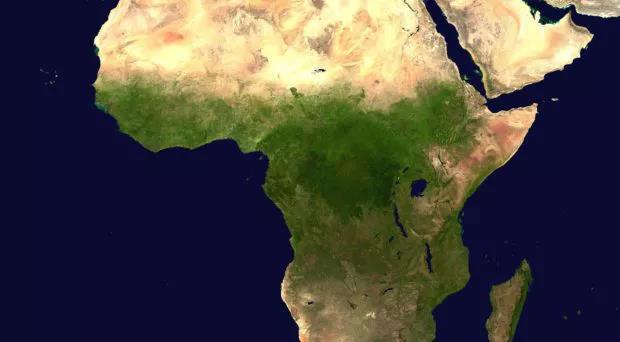|
|
|
|
|
分析就医行程时间,为应对新的疫情爆发指明方向 | BMC Medicine |
|
|
论文标题:Travel time to health facilities in areas of outbreak potential: maps for guiding local preparedness and response
期刊:BMC Medicine
作者:E. N. Hulland, K. E. Wiens et al.
发表时间:2019/12/30
DOI:10.1186/s12916-019-1459-6
微信链接:点击此处阅读微信文章
“有了好的数据,我们才能成功应对疫情,改善患者的结果,并在疾病蔓延之前阻止它的爆发。”,在近期发表与BMC Medicine上的一项研究中,作者们分析了43个撒哈拉以南非洲国家面临病毒性出血热风险的人群前往医疗机构所花的行程时间。

近年来,由于人口增长、人员流动性、环境变化等因素,传染病几乎每年都会出现或重新出现一次,著名的例子有法国的登革热,西非的埃博拉和最先在中国武汉发现的新型冠状病毒。随着这些新发现或重新被再次发现的传染病的步步紧逼,世界各国都需要做好准备,来发现、治疗和应对新病例和疑似病例。《国际卫生条例(2005版)》强制性地要求全球194个国家将重要的新发传染病和其他公共卫生事件进行上报。然而,在这个条例下,许多国家仍不能充分地进行诊断、治疗和应对传染病威胁。这其中的一大原因在于缺乏能用于确定各个地区的优先等级的可执行相关信息,从而无法确定行动的优先次序。
以医疗机构为基础的感染防控(IPC)计划对于全面控制疫情至关重要,全球各地的医疗机构也都进行了大量的诊断和治疗。我们都知道,是否能及时获得治疗(有时通过前往医疗机构所花费的时间来衡量)对于个人的健康后果至关重要,而在路上耗费大量的时间则会导致医护费用增加、疫苗接种减少以及存活率下降。我们也知道,在许多撒哈拉以南的非洲国家,前往医疗机构的可行性大相径庭。最近的一项研究发现,在某些国家,超过75%的人无法在2小时内到达医院。
最近的研究表明,对于大部分撒哈拉以南的非洲地区来说,即使那个地方从没有过病毒性出血热(VHFs)的历史(比如2014-2016年爆发之前,西非从没出现过埃博拉病毒),这些地方的环境仍然会成为病毒性出血热的温床。这些病毒性出血热(包括埃博拉病毒、马尔堡病毒、拉沙热和克里米亚刚果出血热(CCHF))均具有很高的传染性和病死率,如果得不到适当的诊断和治疗,会更糟糕。这些疾病感染后传播力强、预后差,因此各国必须提前做好应对可能出现病例的准备,特别要在医疗机构以及前往医疗机构的可行性方面做好功课。
为了对可能出现的VHF病例做好万全的准备,各国首先要能够预估哪里会产生病例以及这些地区中高危人群的数量。确定VHF患者可能就诊的医疗机构非常重要,因为这些机构会随之在培训、个人防护装备和IPC计划等方面进行投入,从而在诊断和治疗病例以及预防二次感染方面做到最好。同时,确定哪些地方的潜在VHF病例无法就医也同样重要,因为这样规划人员就能够有针对性地改善就医的便利度并加强社区监测和应对之策。
为了解决这一需求,我们最近通过使用地理标尺很小的公开数据,分析了撒哈拉以南非洲43个国家有病毒性出血热风险的人群前往医疗机构的行程时间。在BMC Medicine上发表的一项研究中,我们提供了尺度极其精细的行程时间估算值,方便国家领导层能够获得清晰且可操作的信息来制定本地准备计划。我们确定了靠近危险区域因此极有可能会有VHF病例前来就诊的医疗机构,我们同时也列出了可能需要优先提高就医便利度的区域。我们还估算了VHF患者到高危地点的行程时间,医院离最近的高危地点的距离,以及新的资源如何影响行程时间。
这些工具不仅有利于未雨绸缪,也可以在疫情爆发期间为响应机制提供信息。我们最近使用了在刚果民主共和国(DRC)持续爆发的埃博拉疫情的最新病例数据来估算刚果、卢旺达、乌干达和南苏丹居民去最易到达的埃博拉疫区的行程时间和距离埃博拉病例最近的医院的行程时间。
世界卫生组织已将应对流行病列为未来十年的13项紧急卫生挑战之一。有了好的数据,我们才能成功应对疫情,改善患者的结果,并在疾病蔓延之前阻止它的爆发。虽然我们的研究结果只包含了43个撒哈拉以南非洲国家的应对工具,并且只选择了当下需要优先应对的疾病,但是只要能获取相关的数据,我们就可以为任何疾病和地区定制地图,从而为全球流行病的预防提供指明方向。
摘要:
Background
Repeated outbreaks of emerging pathogens underscore the need for preparedness plans to prevent, detect, and respond. As countries develop and improve National Action Plans for Health Security, addressing subnational variation in preparedness is increasingly important. One facet of preparedness and mitigating disease transmission is health facility accessibility, linking infected persons with health systems and vice versa. Where potential patients can access care, local facilities must ensure they can appropriately diagnose, treat, and contain disease spread to prevent secondary transmission; where patients cannot readily access facilities, alternate plans must be developed. Here, we use travel time to link facilities and populations at risk of viral hemorrhagic fevers (VHFs) and identify spatial variation in these respective preparedness demands.
Methods and findings
We used geospatial resources of travel friction, pathogen environmental suitability, and health facilities to determine facility accessibility of any at-risk location within a country. We considered in-country and cross-border movements of exposed populations and highlighted vulnerable populations where current facilities are inaccessible and new infrastructure would reduce travel times. We developed profiles for 43 African countries. Resulting maps demonstrate gaps in health facility accessibility and highlight facilities closest to areas at risk for VHF spillover. For instance, in the Central African Republic, we identified travel times of over 24 h to access a health facility. Some countries had more uniformly short travel times, such as Nigeria, although regional disparities exist. For some populations, including many in Botswana, access to areas at risk for VHF nationally was low but proximity to suitable spillover areas in bordering countries was high. Additional analyses provide insights for considering future resource allocation. We provide a contemporary use case for these analyses for the ongoing Ebola outbreak.
Conclusions
These maps demonstrate the use of geospatial analytics for subnational preparedness, identifying facilities close to at-risk populations for prioritizing readiness to detect, treat, and respond to cases and highlighting where gaps in health facility accessibility exist. We identified cross-border threats for VHF exposure and demonstrate an opportunity to improve preparedness activities through the use of precision public health methods and data-driven insights for resource allocation as part of a country’s preparedness plans.
(来源:科学网)
特别声明:本文转载仅仅是出于传播信息的需要,并不意味着代表本网站观点或证实其内容的真实性;如其他媒体、网站或个人从本网站转载使用,须保留本网站注明的“来源”,并自负版权等法律责任;作者如果不希望被转载或者联系转载稿费等事宜,请与我们接洽。